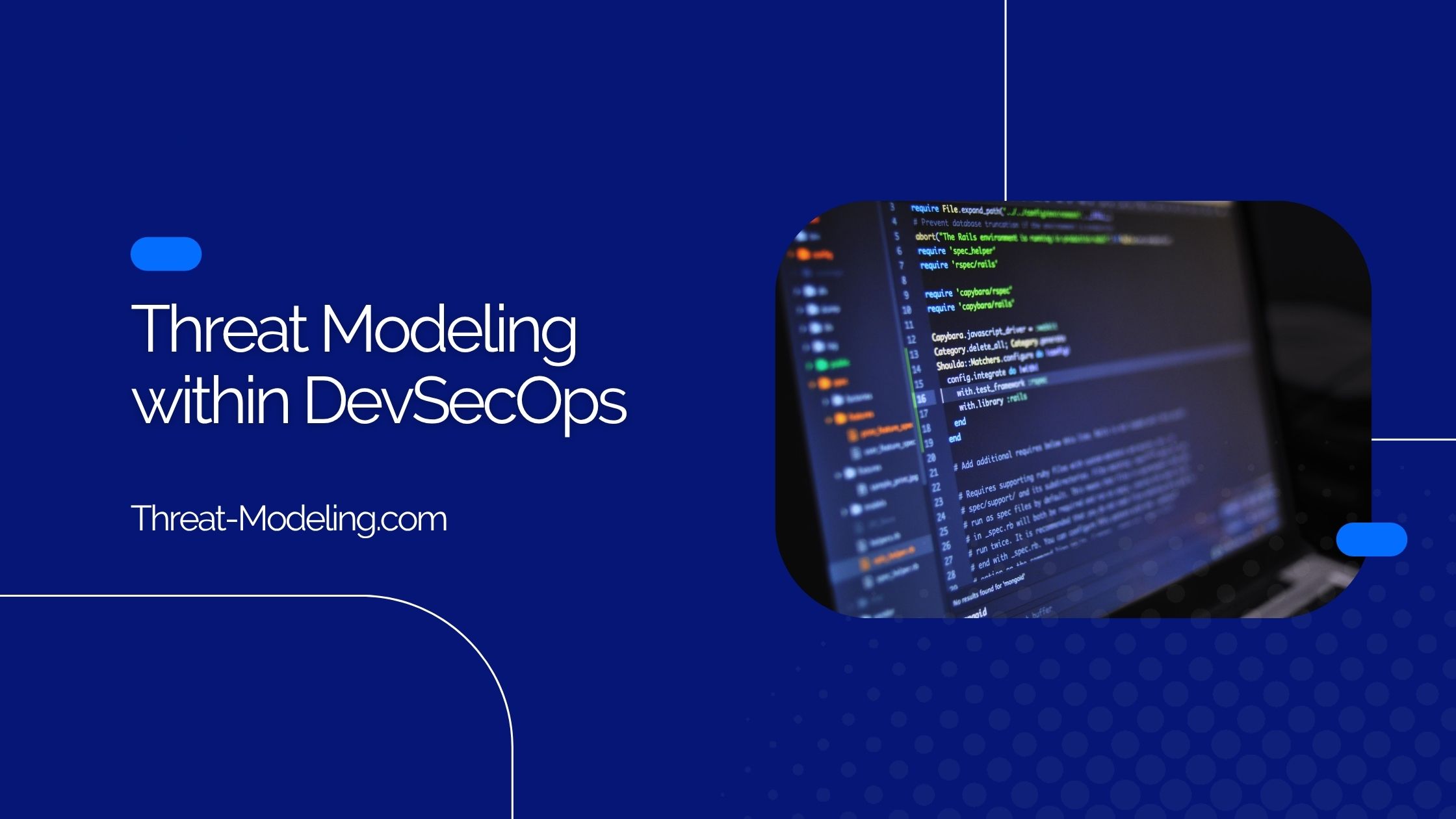Introduction
Threat Modeling within DevSecOps has become more than a nice-to-have talking point; it is emerging as the blueprint for modern software security. In an era when code ships to production dozens, even hundreds, of times per day, organizations can no longer afford to treat security as a gated phase that kicks in after the last feature is complete. They must weave secure thinking into every branch, commit, and deploy. That is where an intelligent, continuous approach to threat modeling steps in. Done well, it pushes teams to imagine how attackers might break the very features they are building, before those features ever reach end users. Done even better, it uses automation and process design to run at the speed of business instead of acting as a brake on delivery.
What Is DevOps, Really?
It helps to start at the beginning, because the term DevOps is often used as shorthand for a sprawling set of ideas. At its core, DevOps represents a cultural and technical movement that erases the traditional wall between development and operations. Rather than handing finished code to a separate operations team for deployment and maintenance, engineers and ops professionals work as a single unit. They share ownership for the entire software lifecycle, from planning and coding to testing, deployment, monitoring, and incident response.
The practical result is speed and reliability. Continuous Integration and Continuous Delivery (CI/CD) pipelines allow teams to merge code, test it automatically, and deploy it with a single click, or no click at all. Cloud infrastructure, infrastructure-as-code templates, and real-time observability complete the picture. Feedback loops become tighter, and experimentation becomes safer and cheaper. That rapid-fire rhythm of build, test, release, and learn is what sets DevOps apart from older, slower models of software delivery.
From DevOps to DevSecOps
As organizations embraced DevOps, a bittersweet revelation emerged. Shipping features quickly is only a win if those features are safe. A stunning product release that leaks customer data will undo months of goodwill. Enter DevSecOps, which pulls security specialists into the same collaborative circle that already unites developers and operations. The philosophy is simple: security is not a checkpoint; it is a core requirement, coded into pipelines and daily habits.
DevSecOps practices include static and dynamic code analysis, dependency scanning, container hardening, and policy-as-code, security rules codified into scripts that run automatically whenever new resources are created. Most important, DevSecOps reframes the security conversation from “prove you are secure at the end” to “design security in from the start.”
Where Threat Modeling Fits In
This is where Threat Modeling within DevSecOps becomes a game-changer. Threat modeling is the discipline of mapping out how a system can fail or be attacked, then using that knowledge to design countermeasures. Traditionally, threat modeling involved whiteboard sessions late in the cycle, often led by a specialist who understood attack vectors better than the developers in the room. That created bottlenecks. With DevSecOps, the ambition is different. Teams want to perform threat modeling continuously, iteratively, and automatically as new features are scoped and coded.
Imagine a team adding an external payment gateway. In a classic workflow, developers would write code, QA would test functionality, and the security team might audit the final release. In a DevSecOps workflow guided by threat modeling, the conversation begins with the attack surface. What data will flow through the gateway? Where could malicious input enter? What happens if credentials are stolen? By brainstorming these questions up front, the team can bake in defenses such as strict input validation, tokenization, and rate limiting before a single line of production code is written.
The Continuous Nature of Threat Modeling
One important misconception is that threat modeling is a one-off exercise. In reality, the architecture of an application is a living organism. New microservices emerge, third-party libraries evolve, configuration settings change, and new regulatory requirements appear from nowhere. Each change introduces fresh threats. Therefore, threat modeling must be continuous. The act of updating a YAML file that opens a new port or increases instance counts should trigger a fresh threat analysis. The goal is to catch risks in the same commit that introduces them, not three sprints later.
Continuous threat modeling mirrors the feedback loops central to DevOps. Just as automated unit tests run each time code is pushed, threat modeling logic, whether human-driven, rule-based, or AI-assisted, should reassess the system with every change. This philosophy keeps security current and prevents the well-known problem of “threat drift,” where the documented model no longer matches the reality of a live system.
Automated Threat Modeling: A Powerful Ally
No human can scour every code path and network flow in a sprawling cloud environment on every commit. Automation steps in to fill that gap. Automated threat modeling tools parse architecture diagrams, infrastructure-as-code templates, and even runtime telemetry to generate and update threat models. They flag missing encryption between services, highlight misconfigured identity permissions, and predict attack paths based on known weaknesses. That information flows back to developers through dashboards, pull-request comments, or chat notifications, allowing for fast remediation.
Automation also democratizes security expertise. A junior developer pushing a small change might not know the ins and outs of OAuth flows, but an automated tool can point out that an access token is being logged in plaintext. In this way, automation becomes a silent mentor, elevating the security awareness of every contributor without requiring them to master every domain overnight.
Maintaining Velocity: Security at the Speed of Business
A lingering fear in many engineering organizations is that adding security layers will slow things down. That fear has teeth if security means extra paperwork, out-of-band reviews, and long approval queues. DevSecOps leaders therefore target a specific principle: security must move at the speed of business. If the marketing team pivots on Tuesday and the product team ships a new integration by Thursday, security needs to ride shotgun—not chase from behind.
How is that pace sustained without cutting corners? The answer is a blend of process and technology. Process means embedding security champions inside each feature team, so someone is always thinking about risk. It also means codifying guardrails, policies that simply make it hard, or ideally impossible, to deploy unsafe configurations. Technology augments those guardrails with automated scanning, real-time alerting, and of course, continuous threat modeling. When stakeholders see that the secure path is the fastest path, the culture shift sticks.
Aligning Incentives and Metrics
Incentives keep the wheels turning. If deployment speed is the only KPI, developers will optimize for that at the cost of security. When security metrics, such as mean time to remediate vulnerabilities or number of threat models updated per sprint, are given equal billing, tradeoffs become explicit and transparent. Modern platforms can calculate these metrics automatically, feeding them to dashboards viewed by engineers, managers, and executives alike. The visibility alone nudges teams toward balanced priorities, because nobody wants to be the bottleneck on a public chart.
Common Challenges and Practical Tips
Adopting Threat Modeling within DevSecOps is a strategic move, but it comes with real-world hurdles. Team members may lack threat modeling experience, automated tools might produce noisy results, and cultures accustomed to “security at the end” can resist change. A pragmatic approach is to start anywhere and expand outward. Pick a critical application, introduce lightweight threat modeling in sprint planning, and automate what you can. Share wins publicly: when a model uncovers a high-impact flaw before release, celebrate that, quantify the saved costs, and use the story to build momentum.
Another challenge is balancing depth and breadth. A two-week deep dive on every minor microservice will paralyze delivery; conversely, a shallow rubber-stamp review misses serious issues. Tiering systems by risk helps here. High-risk components, think payment processors or user authentication, get deeper models and more automation, while low-risk static content receives a simpler check.
The Future: AI-Enhanced Threat Modeling
The next frontier is artificial intelligence. Machine learning models can analyze massive logs of attack data, infer patterns, and propose new threats that developers have not imagined. These insights feed back into automated pipelines, continuously refining the threat model. AI-driven recommendations can also rank risks by potential business impact, ensuring that limited remediation time targets the most dangerous weaknesses first. As these capabilities mature, they will allow organizations to shift from reactive to predictive security, spotting attack vectors before attackers do.
Case Study: A FinTech Startup’s Rapid Journey
Consider a fictional but typical FinTech startup, PayWave, which processes mobile payments for small merchants. In its early days, PayWave pushed code daily and counted on a monthly penetration test to surface issues. One day a partner bank demanded proof that PayWave met stringent security standards. Rather than slow releases to a crawl, PayWave adopted threat modeling within DevSecOps.
The team integrated an automated tool into the CI/CD pipeline that scanned infrastructure-as-code files for risky configurations and matched them against a living threat library. Developers participated in weekly, thirty-minute threat modeling discussions during sprint planning, focusing on new user stories. Over three months, deployment velocity actually increased because fewer emergency patches were required. PayWave caught a potential data exposure issue in staging, a misconfigured S3 bucket, before it reached production, saving both dollars and reputation. Most importantly, the CEO could demonstrate compliance to the bank without stalling innovation. The story illustrates how continuous, automated threat modeling can let even small teams punch above their weight in security without sacrificing agility.
Conclusion
The software landscape no longer tolerates long delays between feature ideation and delivery, nor does it forgive security missteps that compromise data and trust. Threat Modeling within DevSecOps provides a structured yet nimble way to meet both demands. By folding threat analysis into every phase of development, keeping the exercise continuous, and leveraging automation to share insights at machine speed, organizations transform security into a growth enabler rather than a cost center.
The shift is cultural as much as technical. Developers, operators, and security engineers converge around a single mission: deliver value quickly and safely. When threat models are updated automatically with each commit, when dashboards light up the instant a risky permission slips through, and when teams view these signals as just another part of their everyday workflow, security ceases to be a hurdle. It becomes the guardrail that allows confident acceleration.
The promise of DevSecOps has always been to blend velocity with safety. Continuous, automated threat modeling is the practical expression of that promise. Organizations that embrace it will ship code faster, sleep better, and earn the trust of their customers in a world where trust is the ultimate currency.


